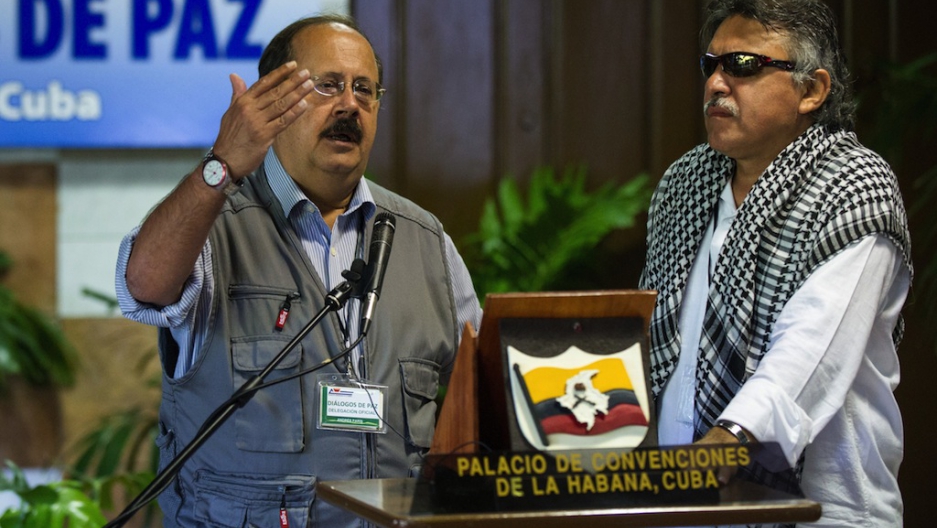Oli Pritchard advises on routes around the city: which are smooth riding and which you should steer clear of
Where to ride in Bogota is a critical point to consider. Unlike many cities you may know from riding, Bogota streets vary wildly, from immense 10-lane each direction behemoths, to claustrophobic singletracks, from race-ready asphalt to jagged lunar chaos.
This edition, we’re going to look at some of the most commonly used and useful roads in the big bad Bog. I’ve talked about this before, but it’s a really good idea is to stick to big roads. It might seem counter-intuitive, but they’re usually a lot safer for cyclists. Big roads tend to be maintained better, have more lights and more traffic/pedestrians to guard you.
Strangely in Bogota, roads are like the politics: two rights can make a wrong and three a left turn. When joining a big road, bear in mind you might have to fuss around some side streets to circle back around. Better yet, plan your route, think about where you’re going and anticipate where and when to move across.
The roads you want in Bogota vary according to your need, but some stick out as particularly important. As Bogota is predominantly a north-south city, the bulk of these are carreras. Septima is your key route close to the mountains, Caracas serves you a little further over and the NQS/novena connects you to the 26. The Western Suburbs are served by Boyacá and the 68.
Crossing these are the Calles, of which 26 is probably the biggest. 13 drags you out into the Zona Industria, then 53, 63, 72 are the key connectors in the north. After that, 80 and 100 are fun rides and avenida Primera de Mayo is not for the faint hearted in the south.
Septima is probably the most useful for most foreigners, dragging you through the whole of Chapinero, past the 72, skimming the financial district and finally landing you in Usaquén, although it actually goes right out to the country if you can be bothered. Be very careful in the centre, as the pedestrianised part of Septima is chaos and very badly administered. Clear your throat before embarking, as you’ll be bellowing and barking the whole way along. There are fruit sellers; pedestrians; skaters; bands; ñeros; indigentes all the way from Colpatria to Bolivar. Oh, and racing guinea pigs.
After that, it’s a clear ride going north all the way up to 68. Not many potholes, very fast, safe with lots of interesting places to stop. Usefully, not many roads cross Septima,can hit it like a time trial and grind away like a dream. There’s a drop from Avenida de Israel down to the 100, so be prepared for some good pace there. North of the 100, you can slot into the outside lanes and get really fast.
A new problem on the Septima is the recently introduced bus lanes. To try and get the SITP disaster functioning, the council have given them special lanes on the inside, and buses get furious with bikes in them. We’ve noticed a lot of drivers cutting close to bikes in the bus lane, so be ready to give them a yell, and be prepared for them to pass close.
Where Septima is unidirectional, you’ll have to use 13 (11 north of Lourdes) to go south. It’s a nice one way road, so it’s fast and unfussy. 13th is unlucky for some though and does have a LOT of complications: pedestrians, SITP/Transmi, regular busetas…all competing for space like vultures attacking a fresh corpse. To stay safe, stick to the left side of the road, away from the buses and taxis that jerk over to the side with as much grace as an Englishman dancing.
26 is a racetrack for the most part, and has surprisingly little traffic. The bike lanes here are occasionally used by gangs of robbers, so are best avoided after dark, although it’s quite cool to take the underpasses through the Transmi stations. Another benefit of taking 26 is that it means you can avoid taking two sides of a triangle, due to its diagonal position.
The NQS/Novena is one of the beautiful quirks of the Bogota “grid” system, lying across the city like a sonorous anaconda. Up at Usaquén, it’s right next to Septima, yet by 72 it’s west of carrera 34. This is a big boy, a real wild child. As it heads diagonally towards 72, it bloats and expands until it turns purely south with a thundering five lanes (plus the transmi) in each direction, divided for the most part by a canal. Get on the inside double lane and you will be able to fly along at 40-plus kph as though you’re in TRON.
The inside lanes are actually safer than the outside, as you have no roads turning onto you and no pedestrians, nothing. The AutoNorte is also like this, a giant thug of a road with dozens of lanes. Be aware where the lanes are leading you, and remember you can always jump off and walk. Both of these roads will carry you through the city very fast, even if they’re not so direct.
Whizzing down the 63 or 53 can be fun, especially at night, but they don’t link you to much. Still, if you have to head west, they’re your fastest options. They’re good, but be ready for hill-bridges from time to time. Especially at the bottom, you can easily overcook the speed and hit the bottom dangerously quickly, into merging traffic and pothole scars.
Got a hankering for some hill rides in the middle of a congested, smoke-filled concrete neo-hell? We have just the thing, good sir and madam, come this way for the Circunvular. It’s a bizarre anomaly, dozens of kilometres of climbing and descending, obscured in the clouds surrounding the Cerros Orientales. You’ll find yourself cursing the climbs and hanging on to your brakes, but it’s exhilarating in the extreme. It’s inadvisable at night due to a lack of decent lighting, and you should take care for dogs and ñeros, especially when you’re just north of La Merced and Macarena. Stick to the right hand side of the road, even in daytime.
Oli ‘el Vikingo’ Pritchard is an ex-London courier with experience of riding in many cities across four continents. His column, 2 Wheels Good, is a regular column on cycling in Bogota.



